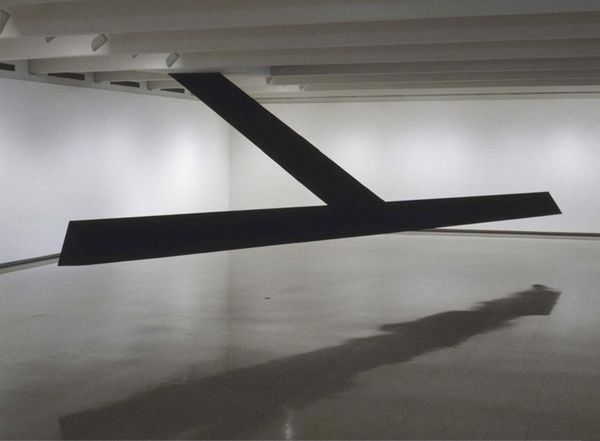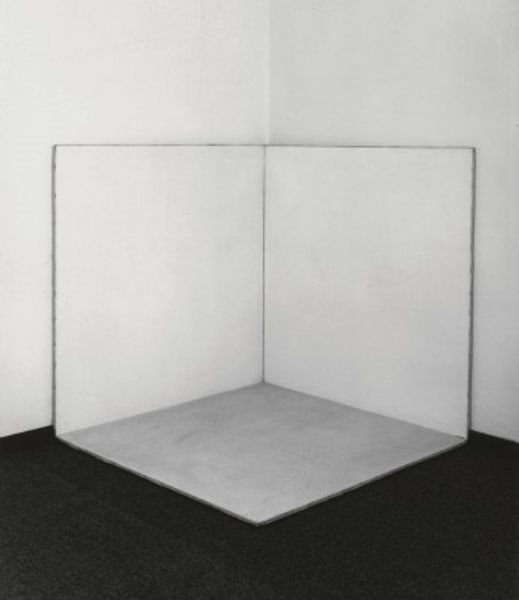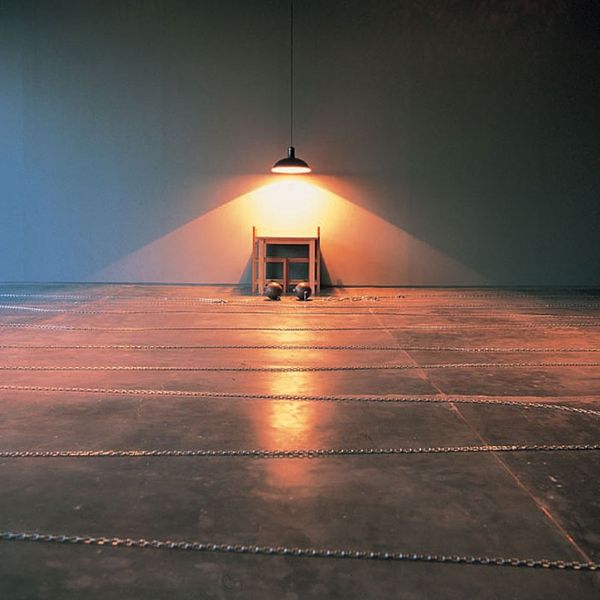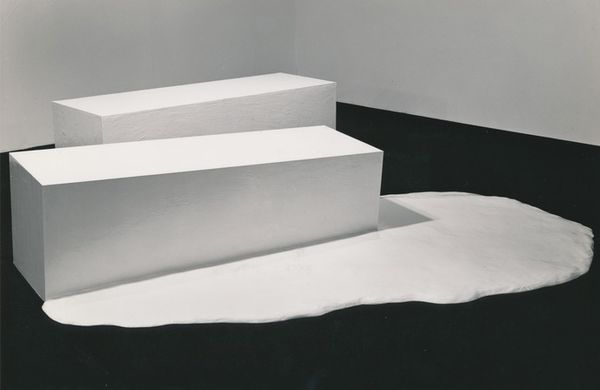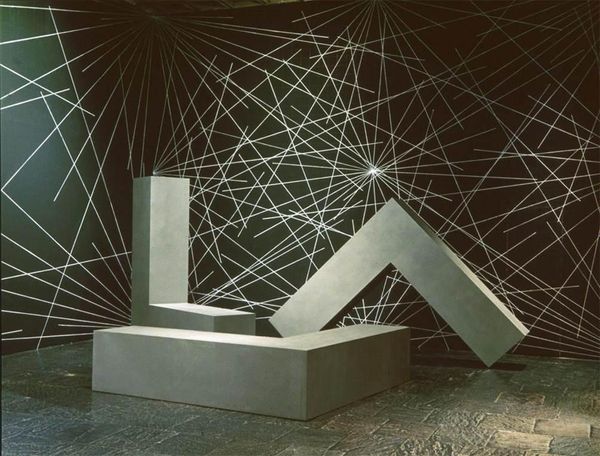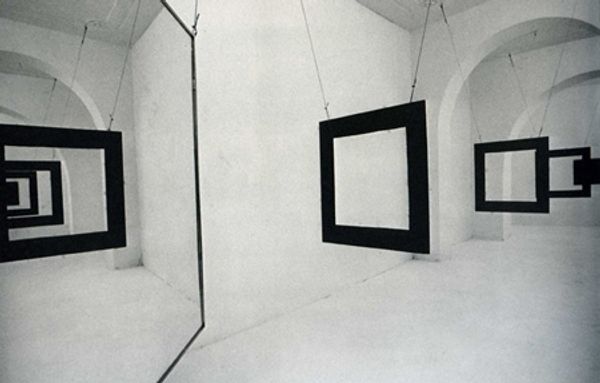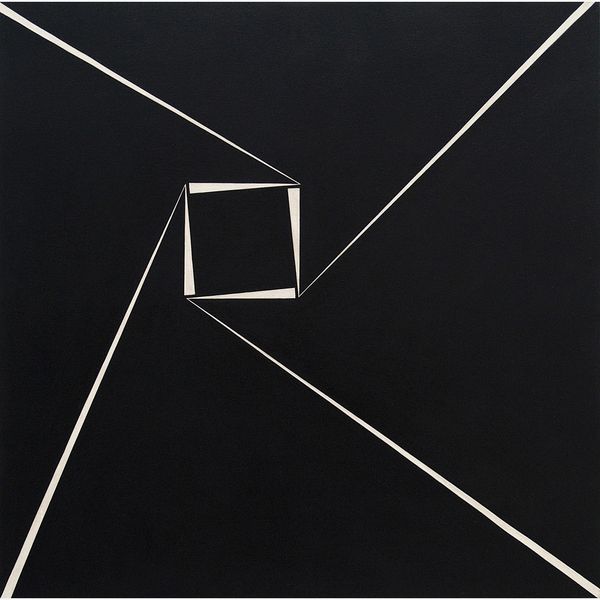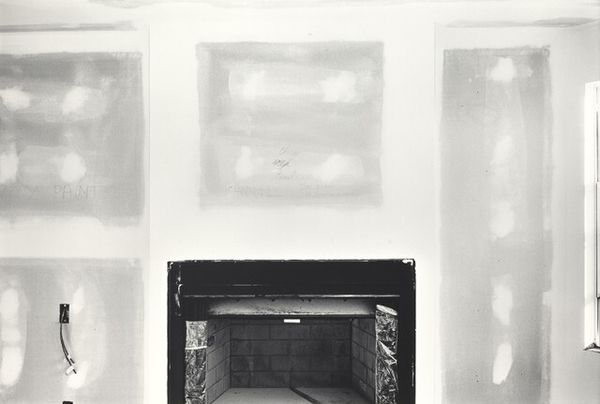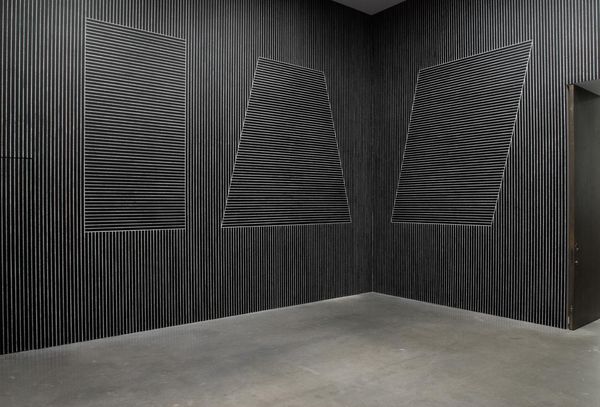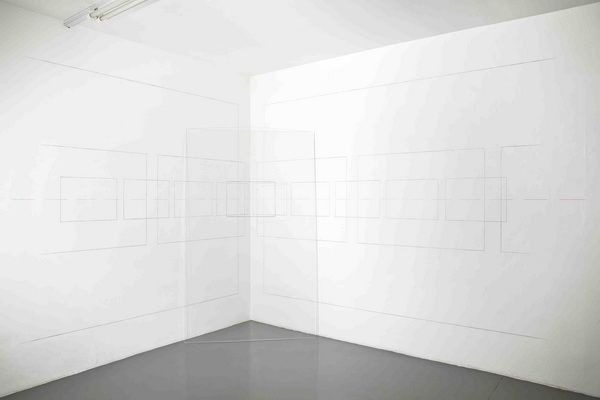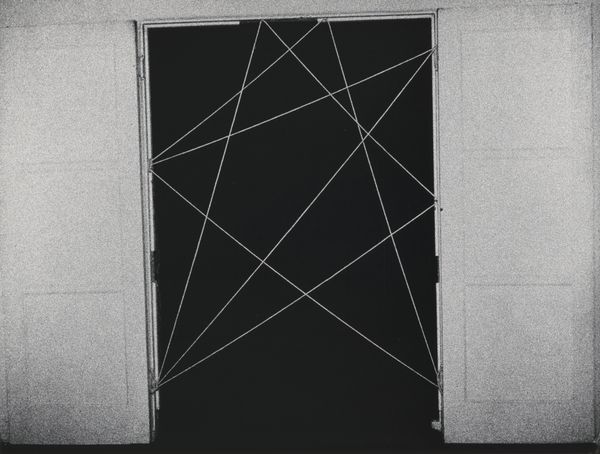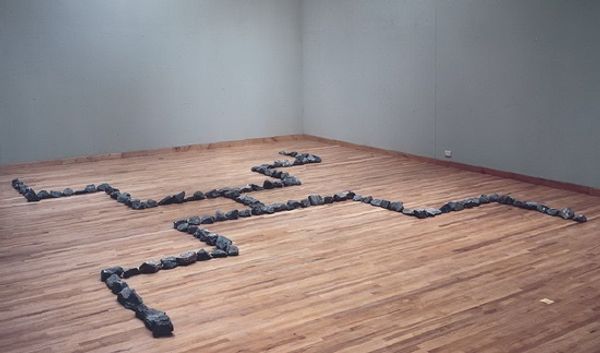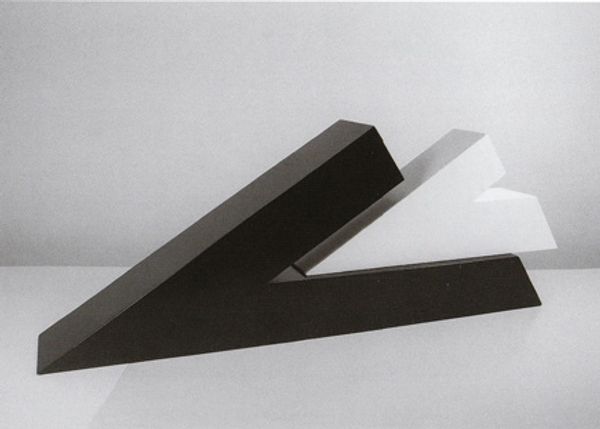
metal, sculpture, installation-art
#
monochromatic
#
conceptual-art
#
minimalism
#
metal
#
sculpture
#
geometric
#
sculpture
#
installation-art
#
modernism
#
monochrome
Copyright: Walter De Maria,Fair Use
Curator: Walter De Maria's “Triangle, Circle, Square,” from 1972, presents three fundamental shapes rendered in metal and placed directly on the floor. Its austere simplicity immediately strikes you. Editor: Yes, the chrome-like sheen against the dark floor certainly creates a captivating tension. It's undeniably minimalist. I am struck by the stark geometry and the way it activates the negative space around each shape. Curator: De Maria's work, deeply rooted in conceptual art, was often about challenging conventional notions of sculpture and art's relationship to space. The presentation—or, more accurately, the placement—of these archetypal shapes, invites the audience to consider the essence of form itself. This resonates with wider explorations by his contemporaries questioning institutions, access and control of public display. Editor: From a formal perspective, notice how the metallic material affects our perception. It's reflective, almost mimicking mirrors or lenses, causing our eyes to bounce and dart around to make sense of its boundaries. I'm captivated by the tension and sense of disorientation these reflections instill within me. Curator: Absolutely. And its impact extends further. These aren't just shapes, but are rather Platonic ideals reimagined in an era marked by questioning established truths. The gallery or museum, typically an authoritative space, here is presented as an arena for a renewed investigation into fundamentals. The artist offers little interpretative guidance, instead inviting critical dialogue. Editor: Considering De Maria's broader work, especially his earthworks, do you think this seemingly indoor and gallery-bound work contains elements of this expanded field—a gesture toward landscapes contained and reduced? Curator: It’s a pertinent observation. While devoid of the overt ecological themes of much land art, the reduction of natural forms to basic geometric shapes encourages reflections about humanity’s efforts to codify, tame, and exert dominion over nature through imposed geometries. Editor: A truly illuminating reflection on form, material, and our relationship to fundamental geometry, with its sleek yet grounded appeal. Curator: It presents a subtle commentary on cultural impositions and intellectual endeavors, delivered with deceptive visual plainness.
Comments
No comments
Be the first to comment and join the conversation on the ultimate creative platform.
